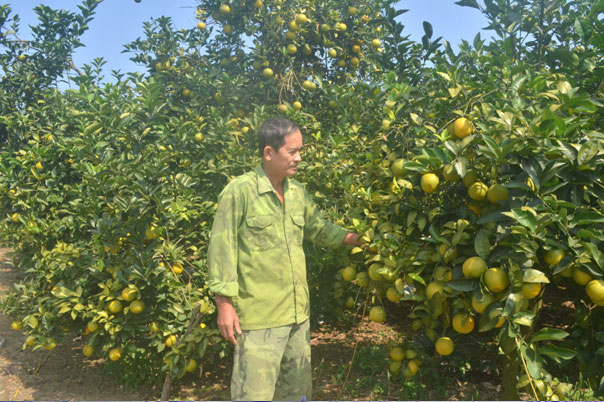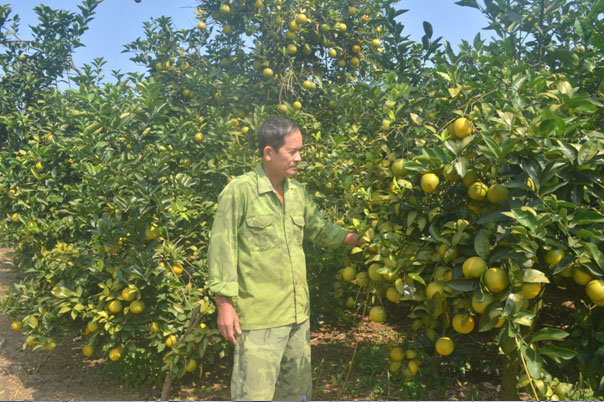



Le Minh Quy always pays due attention to intensive cultivation to improve the quality of Lac Thuy oranges.
Previously, Co Nghia commune was considered
the cradle of orange trees in Lac Thuy district, together with Dong Tam, Lac
Long, Lien Hoa, Phu Lao, Phu Thanh and Hung Thi communes in Song Boi town.
Since the 1970s, orange trees were planted in thousands of hectares, benefiting
hundreds of households. However, the Song Boi farm was dissolved in August
1999, and for other reasons, the orange planting area was narrowed down, and
the trees lost its role as key crops in Co Nghia commune in particular and in
Lac Thuy district in general.
Bui Ngoc Son, an agricultural expansion encourager in Co Nghia commune, said
planting orange trees require high investment, careful nursing, and technical
skills. In a long time, farmers in Co Nghia commune had been hesitated to plant
the trees in spite of being the cradle for orange trees in the district. The
situation changed over the past decade, when several households planted
oranges. In hamlet 2C, Le Minh Quy was the first to plant orange trees,
succeeded, and became a role model for the commune.
With the determination to begin his business with the "trees for the rich”, Quy
started to plant oranges in 2008. At that time, no one in the hamlet and just
few in other communes did the same thing. Quy and his wife planted five "sao”
of oranges and five "sao” of longan trees (one sao equivalent to 360 sq.m) and
other short-term crops. They didn’t have much experience nor technical
knowledge in planting orange trees, therefore, they learned from television,
newspapers, books, and field visits.
Orange trees are difficult to plant, vulnerable to weather and diseases,
therefore ,he spared much of his investments and efforts to take care of them.
His orange garden develops well and gives high-quality fruits.
Quy planted three key orange varieties, namely V2, yellow flesh Vinh, and Canh
sweet orange, with the harvesting time lasting from November to February
of the next year. The two latters are favourite because of thin peel, a lot of
juice, less seeds, fiber and sweet taste. Quy has expanded his orange garden to
nearly 4 hectares, half of it generate 600 million VND (26,400 USD) per crop.
Having not satisfied with the achievements yet, Quy plans to expand his orange
planting areas while focusing on improving the quality of oranges. After 10
years of planting orange trees, he has developed know-how to produce
high-quality orange fruits, contributing to promoting the Lac Thuy Orange brand
name./.